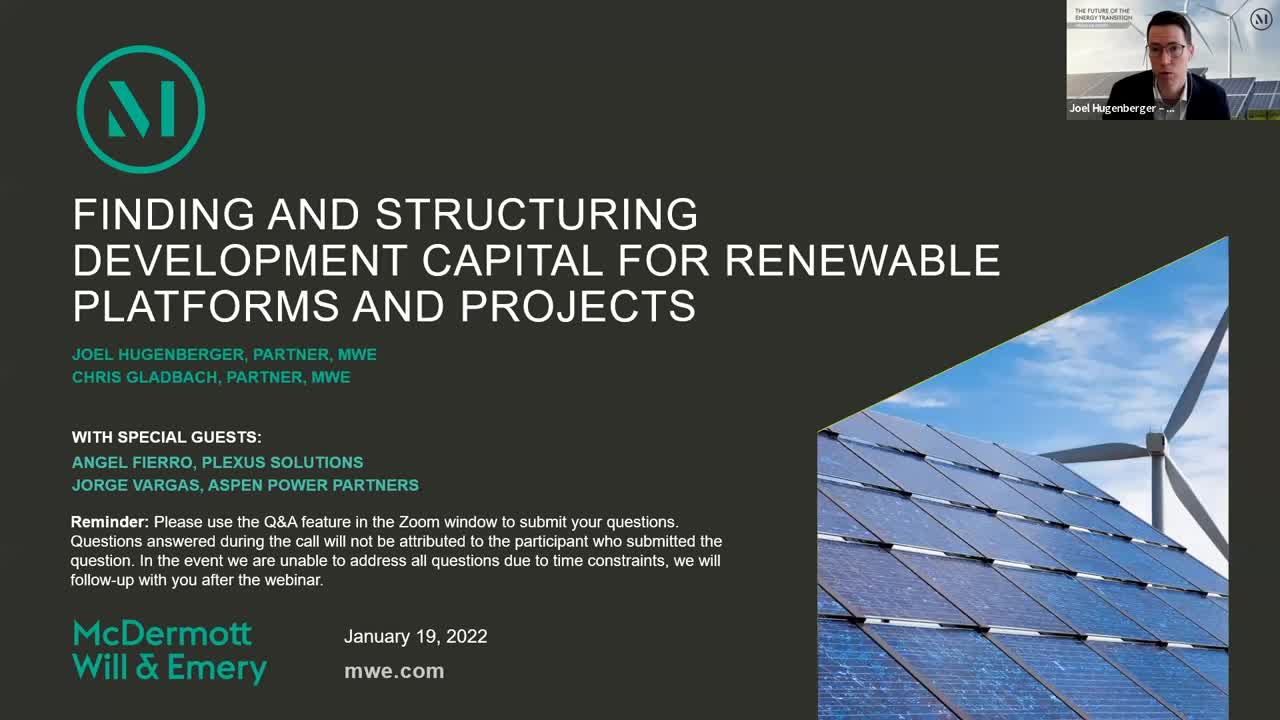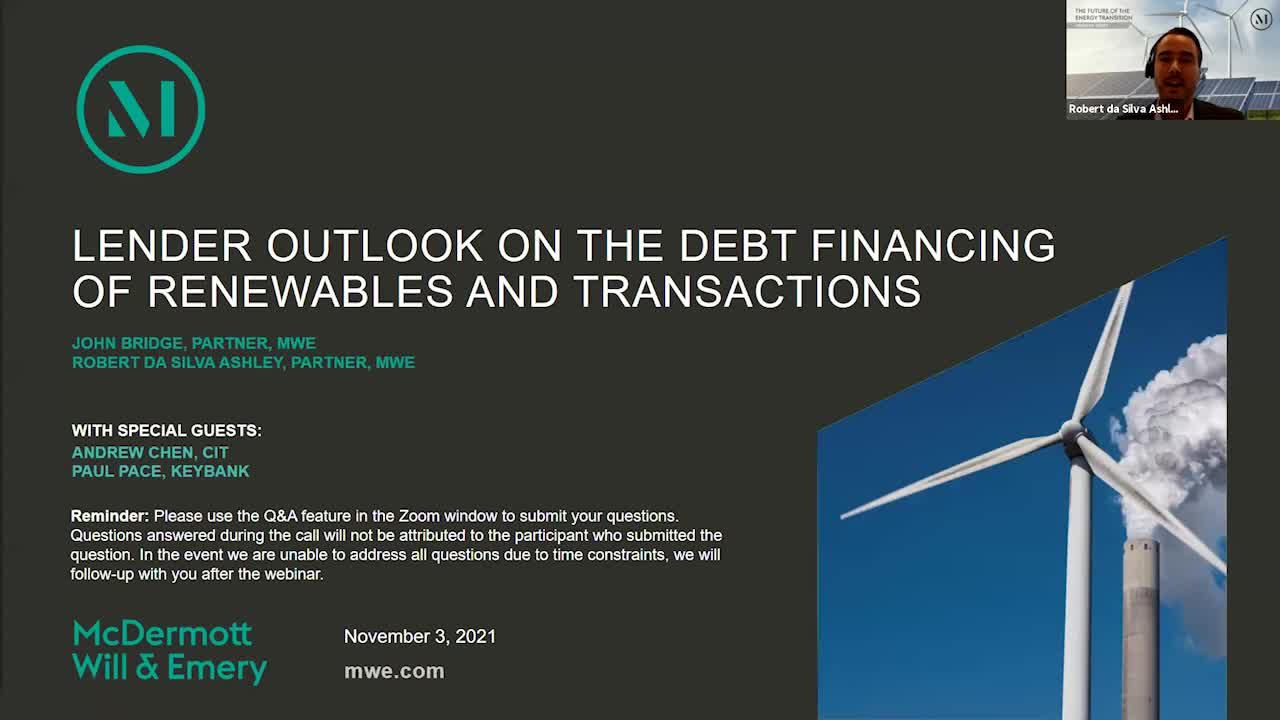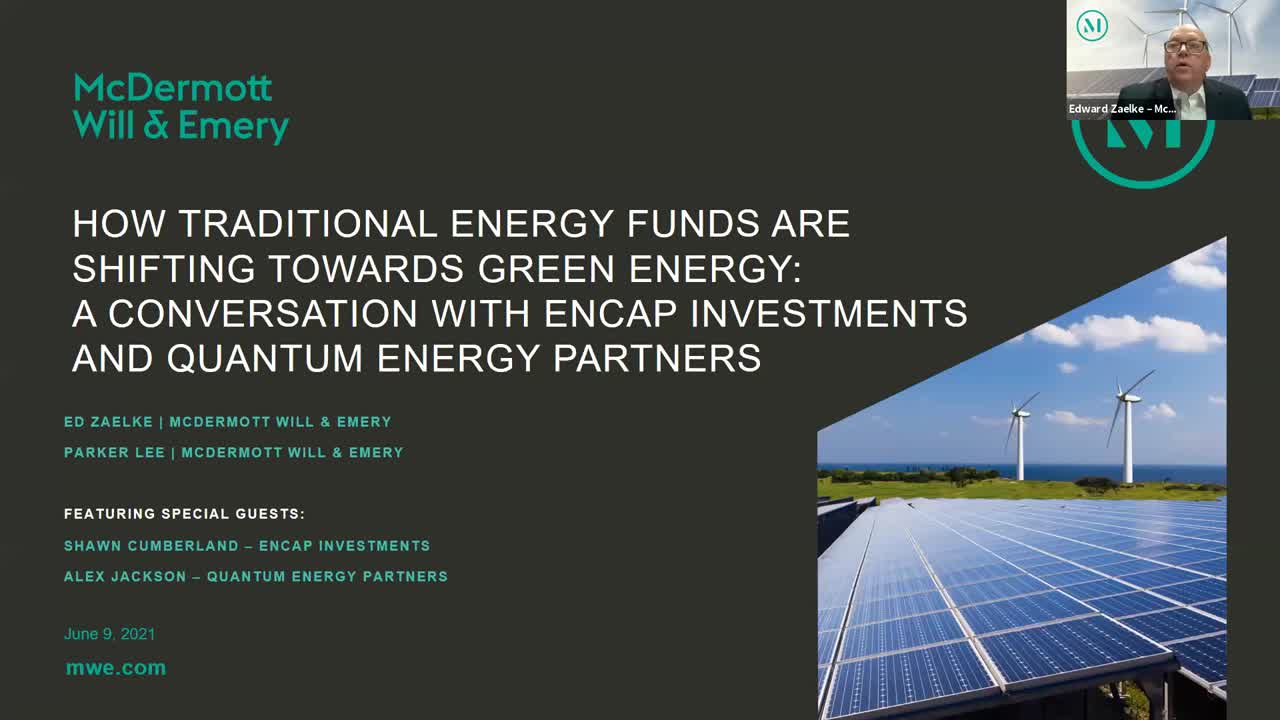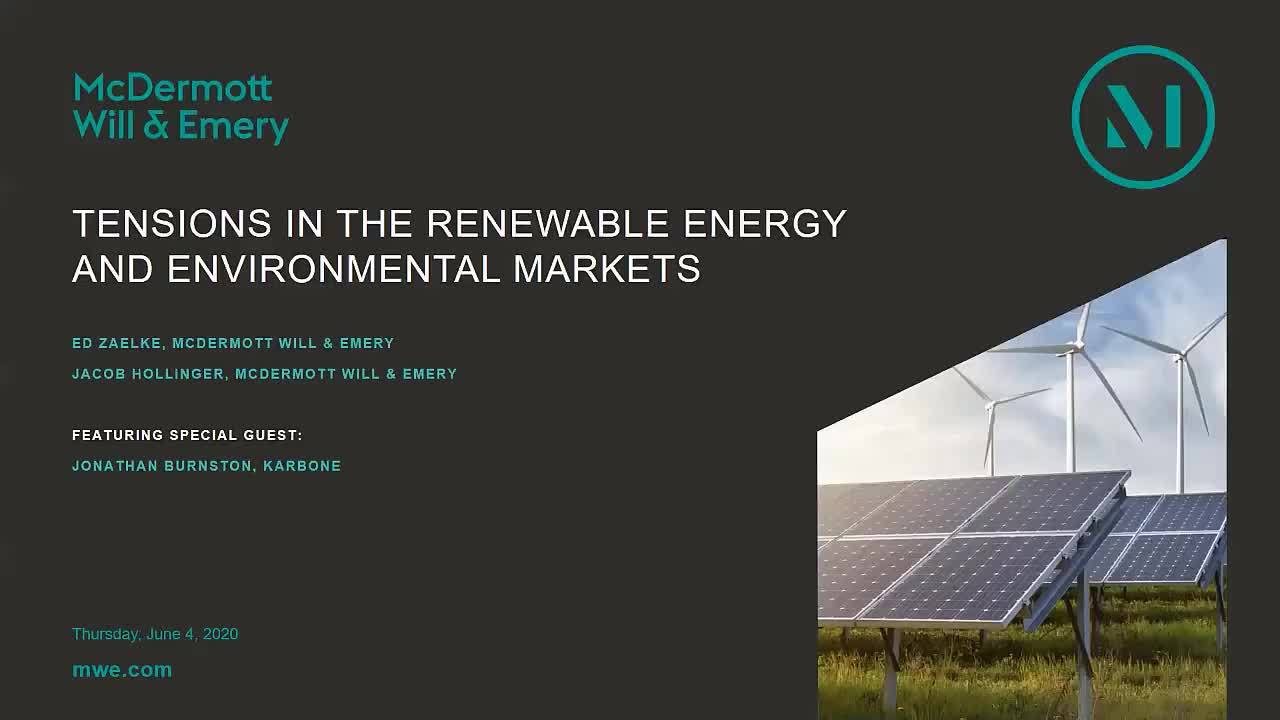Carl Fleming, a partner in McDermott’s Energy and Project Finance Group and leader in its Energy Transition Team, hosted a panel of industry leaders from Apex Clean Energy, Leyline Renewables and Pattern that explored the opportunities and challenges for ESG and hydrogen. Here are the key takeaways:
1. Various companies are looking to the environmental, social and governance (ESG) opportunity, particularly long haul trucking, overseas shipping and airlines, where the fuel needs far exceed those currently available for electrification and where recharging stations are limited or impossible. As a result, we are likely to see a mix of electric and hydrogen going forward where one technology may be slightly more advantageous than another. Or we may see the two complement one another in a larger strategy.
2. Midstream oil & gas operators are looking to increasingly transition to hydrogen, whether it is green, blue or turquoise hydrogen. Which shade of hydrogen prevails will be determined by the capital costs involved as well as ESG demands.
3. Transmission congestion is affecting the ability of many renewable energy developer to deliver power from some of the most resource-rich areas. However, hydrogen offers an excellent solution in some cases as it eases the need for transmission in those highly congested areas.
4. The high costs of hydrogen as well as the need to build out an infrastructure to properly transport are current challenges that are in the process of being overcome by a slew of developers who see the opportunity for hydrogen.
5. The Biden Administration’s support of hydrogen hubs and billions in hydrogen infrastructure should continue to spur further hydrogen development at a rapid pace.
Carl Fleming and his team in Houston are currently leading a large number of hydrogen transactions for leading developers. In particular, they are enabling a number of first-in-kind hydrogen transactions utilizing newer technologies and investment strategies.
read more

 Subscribe
Subscribe




